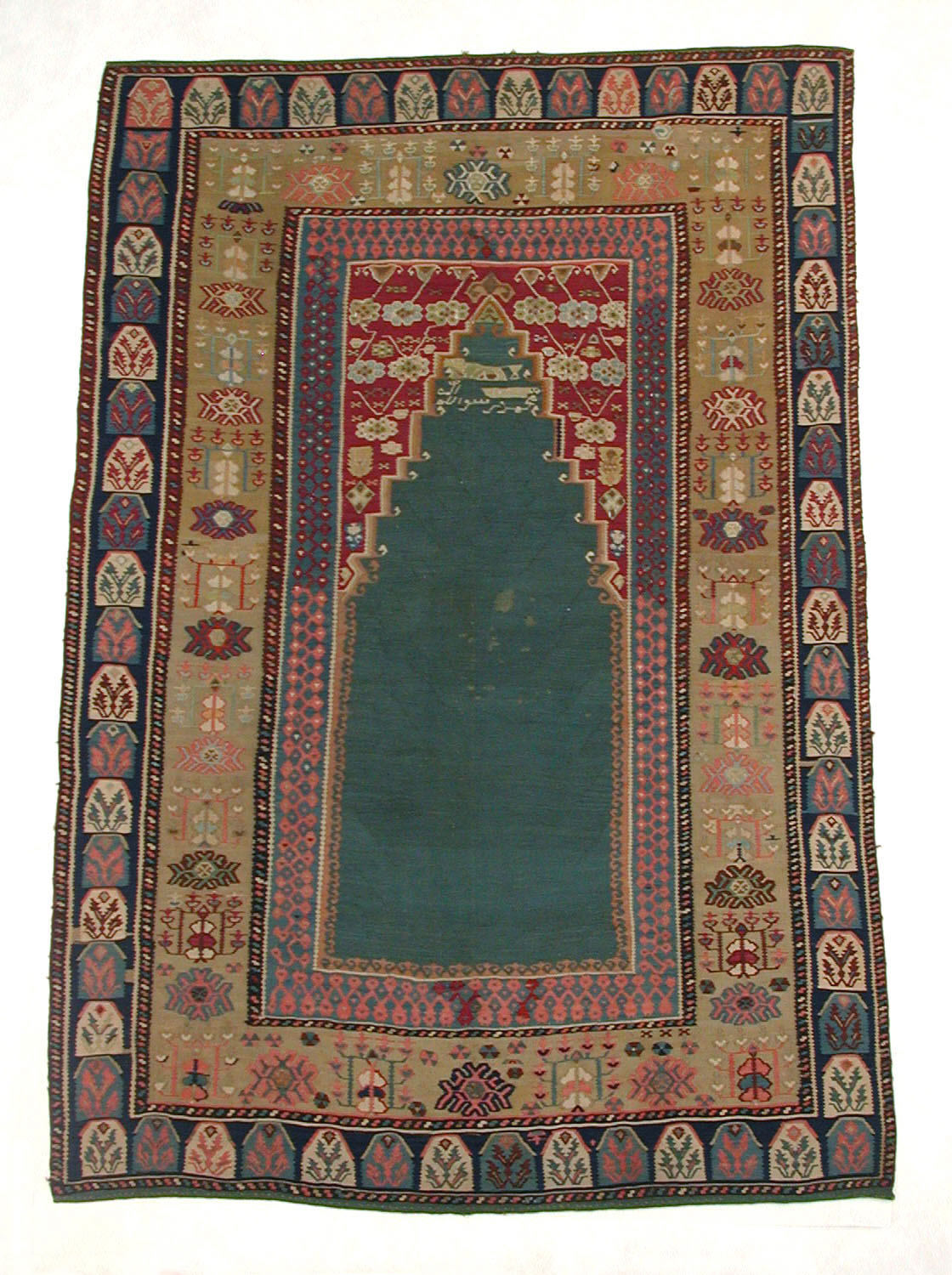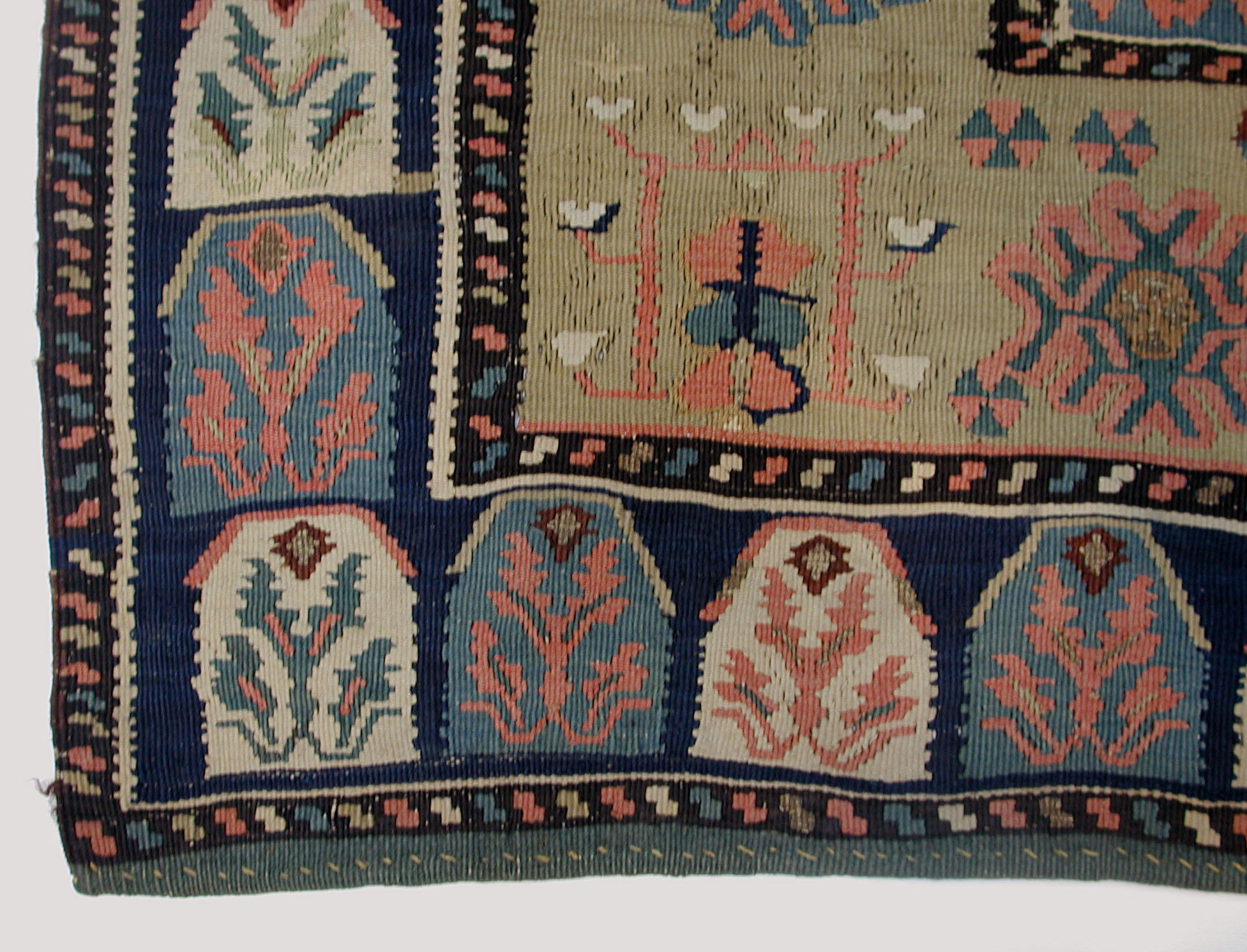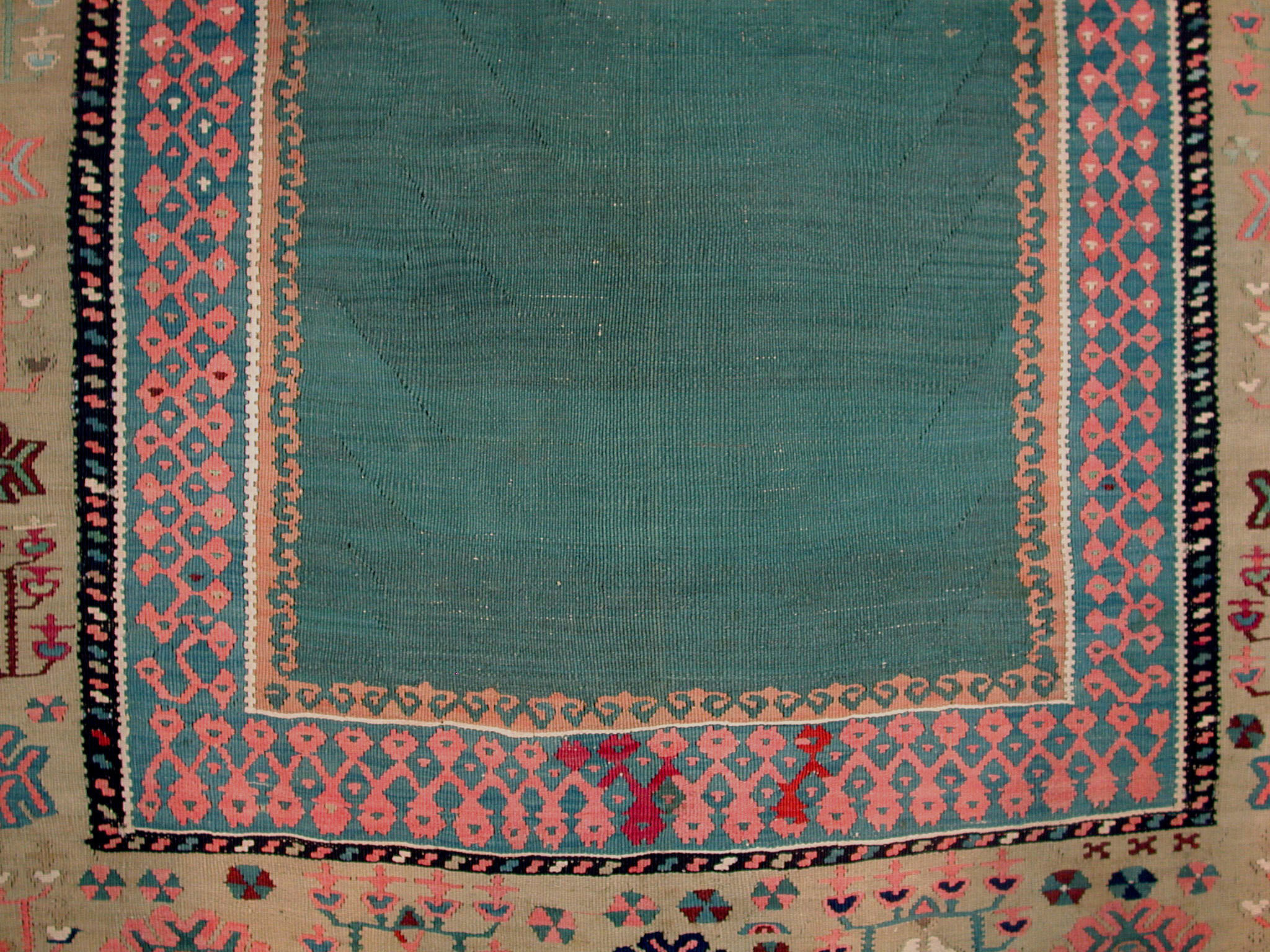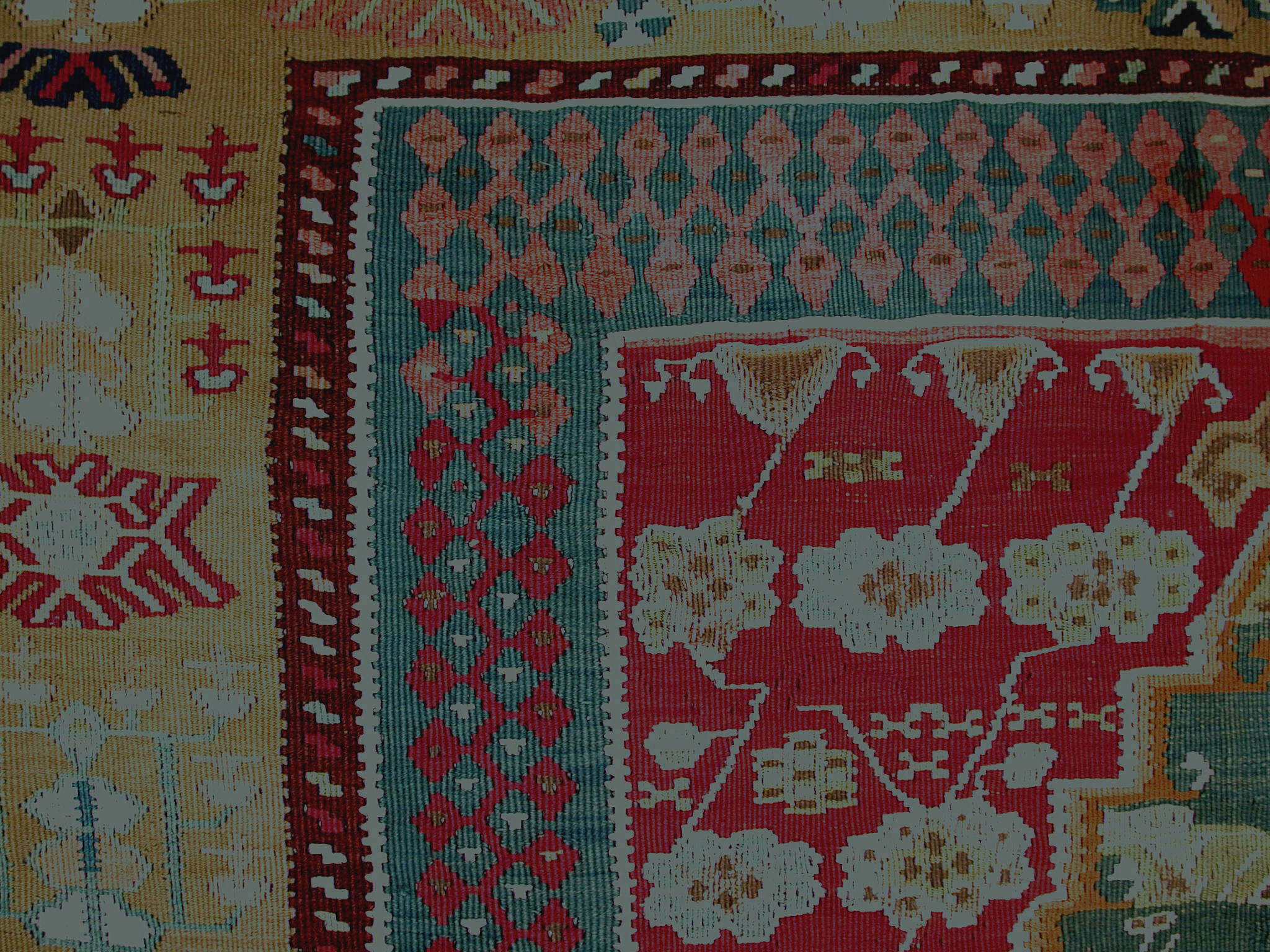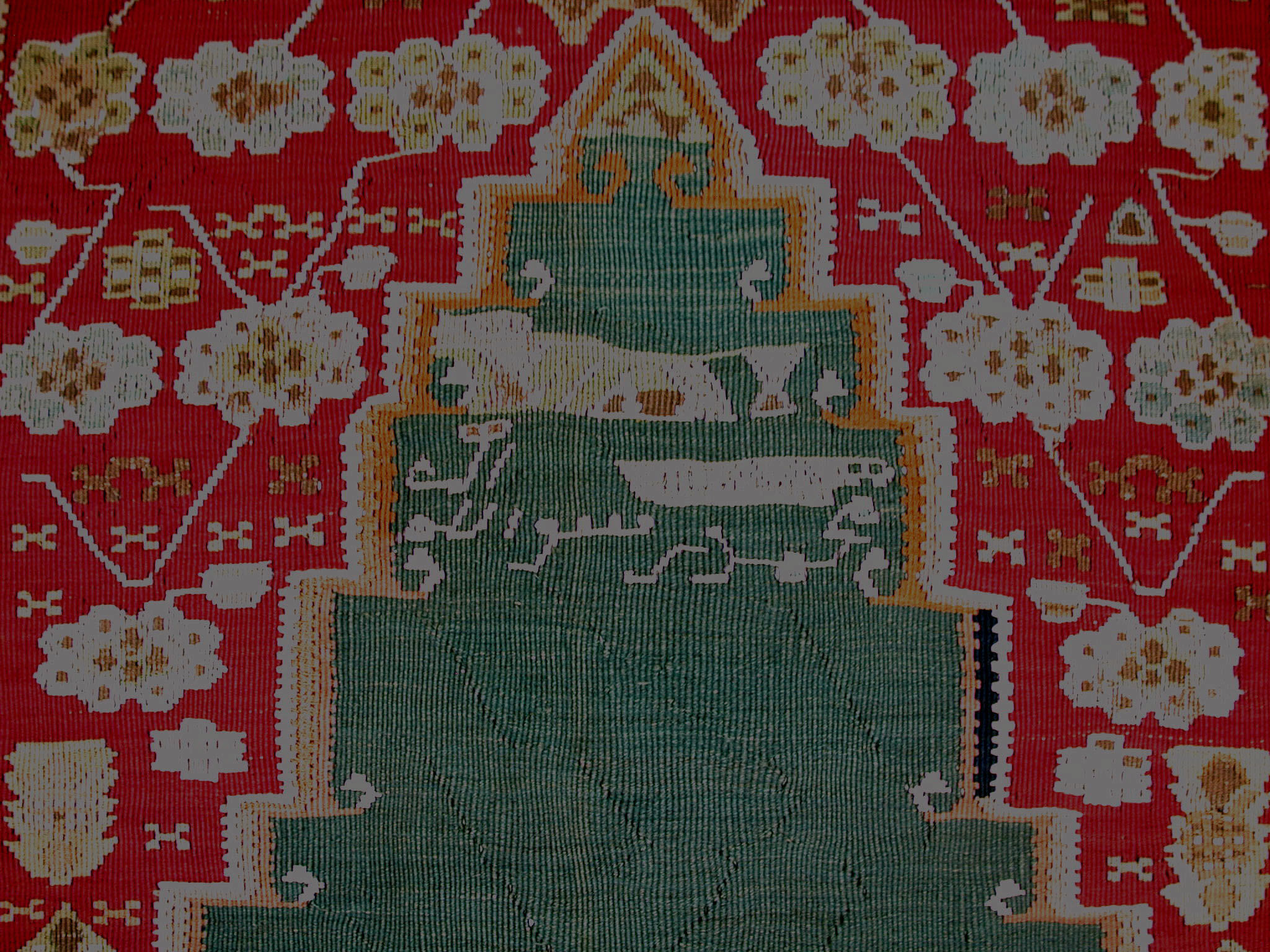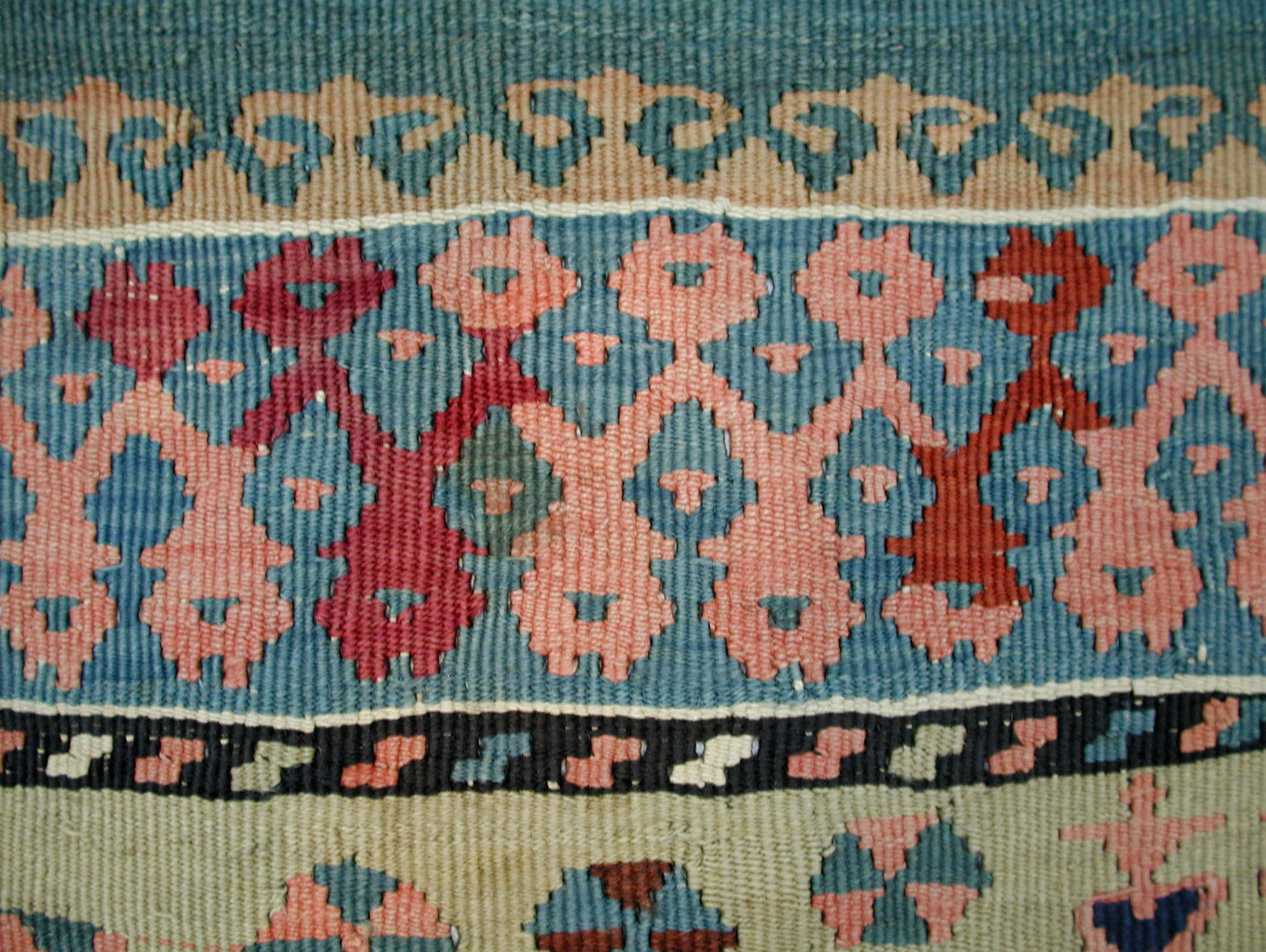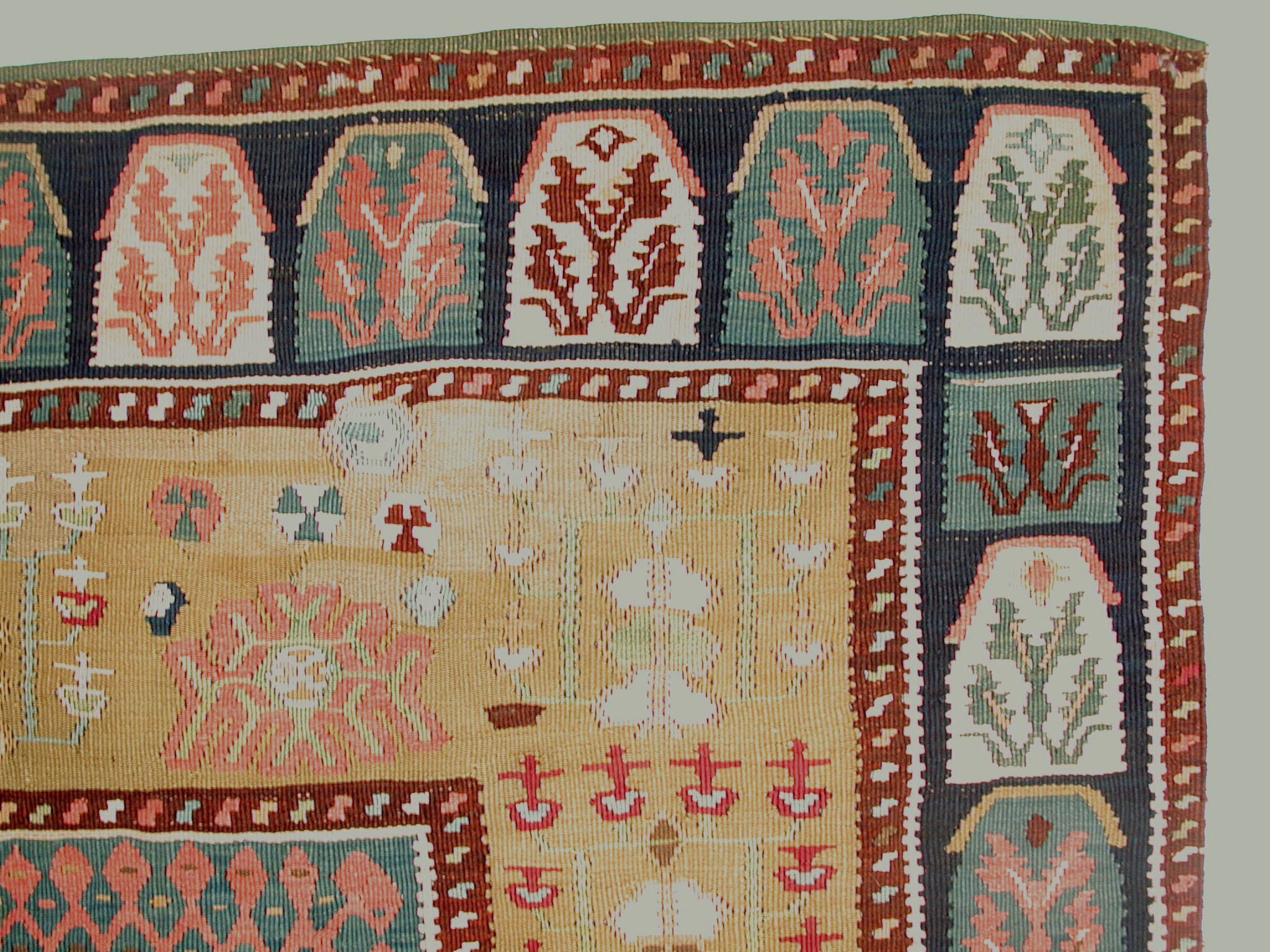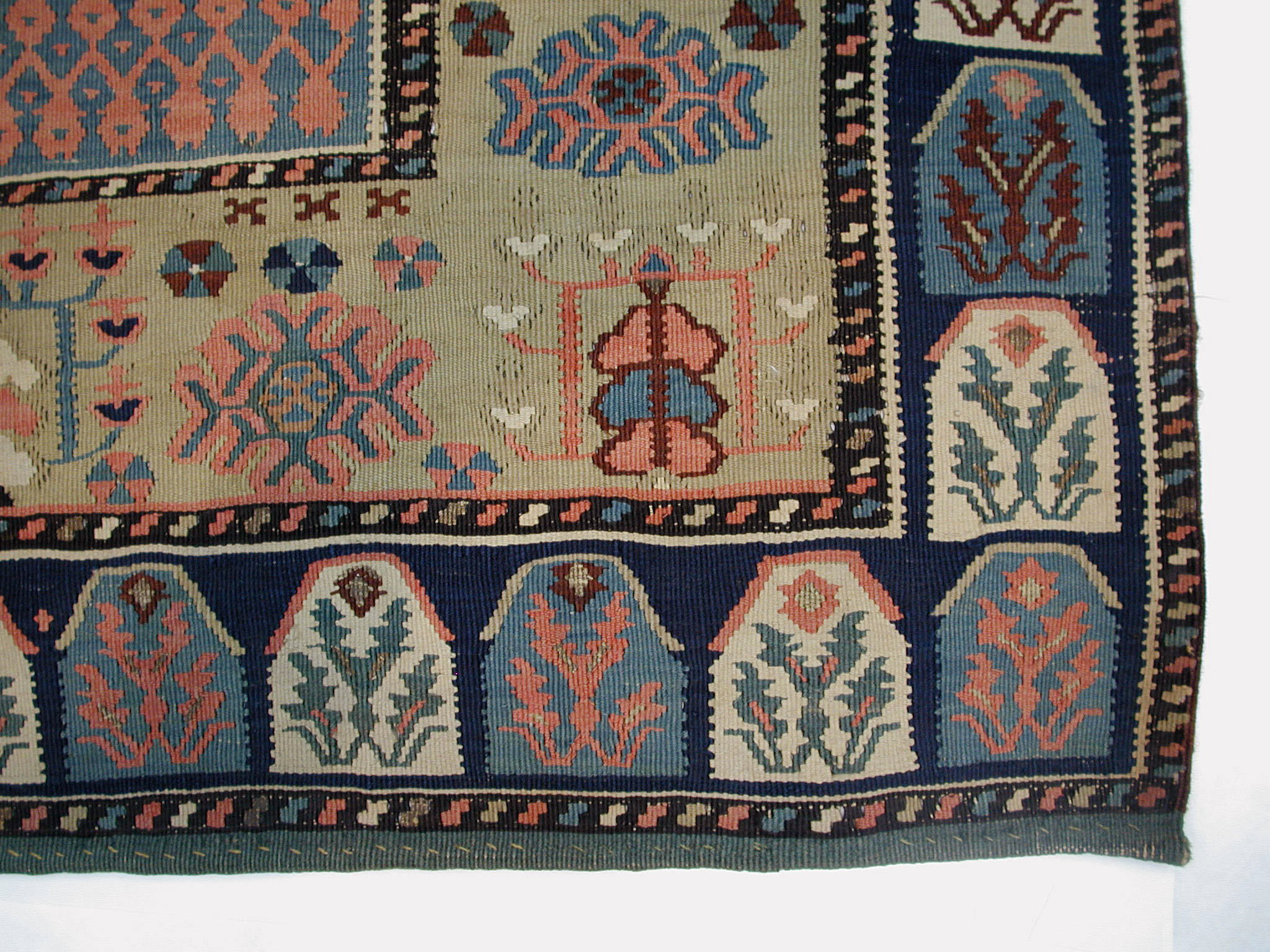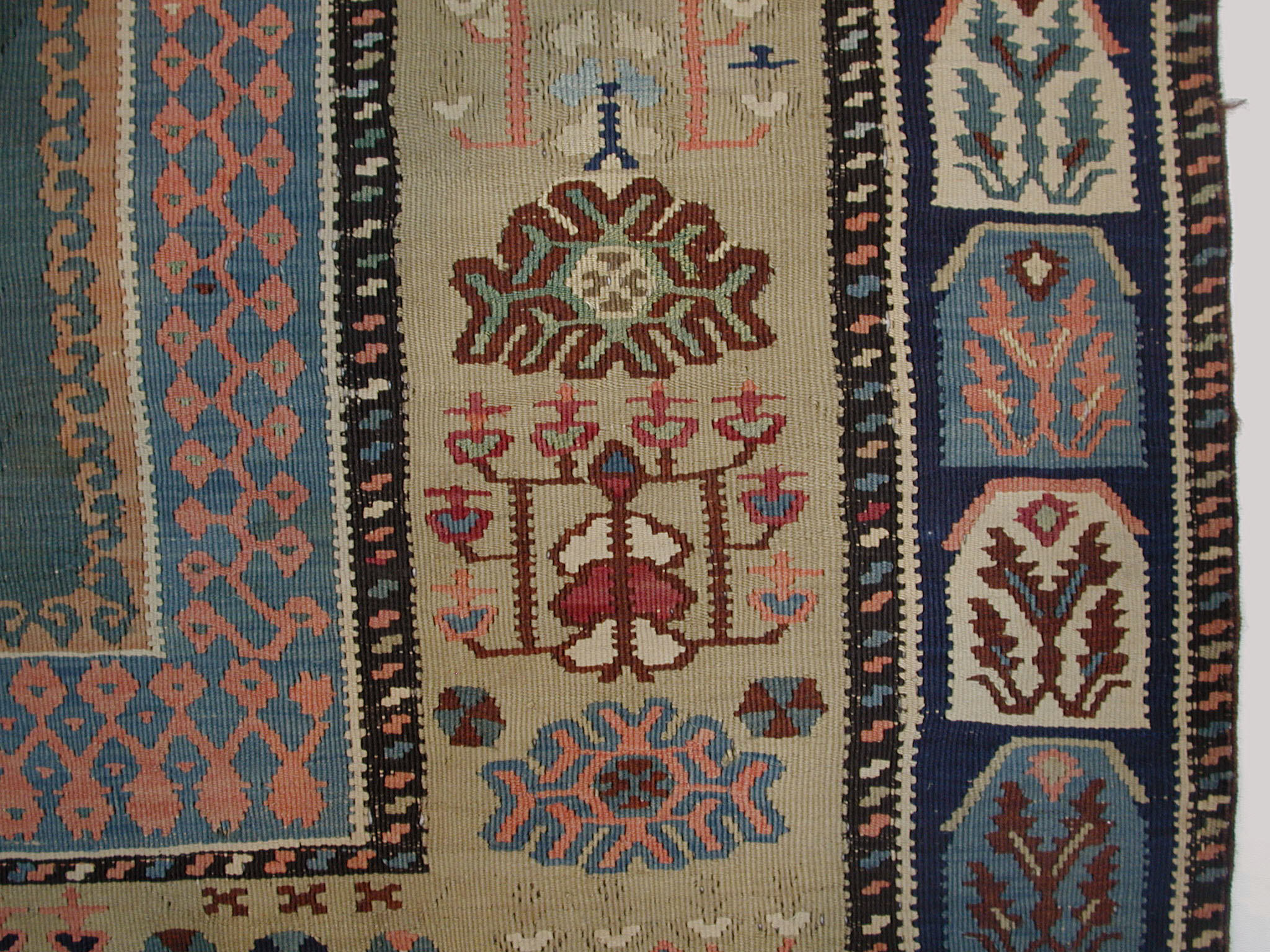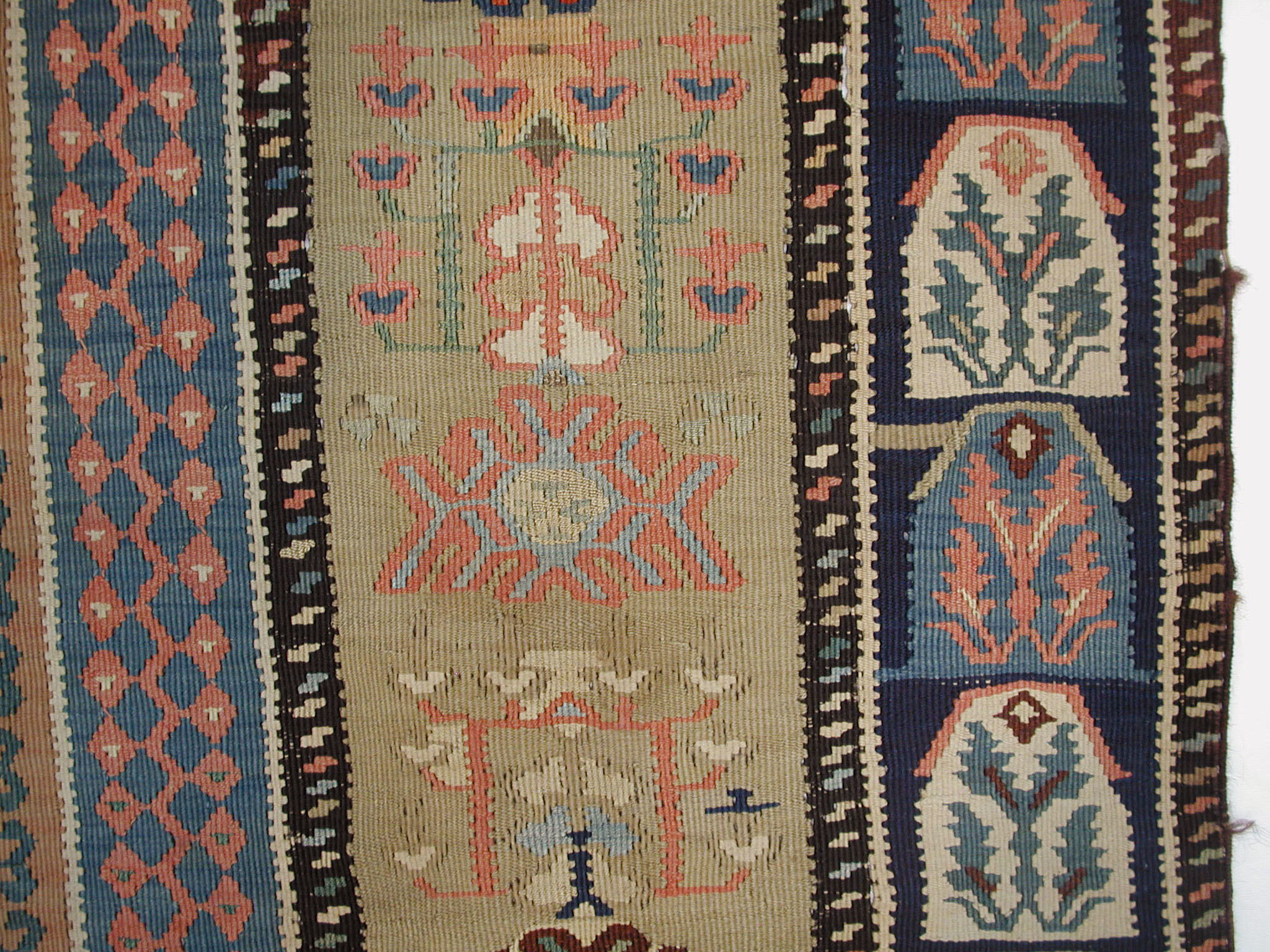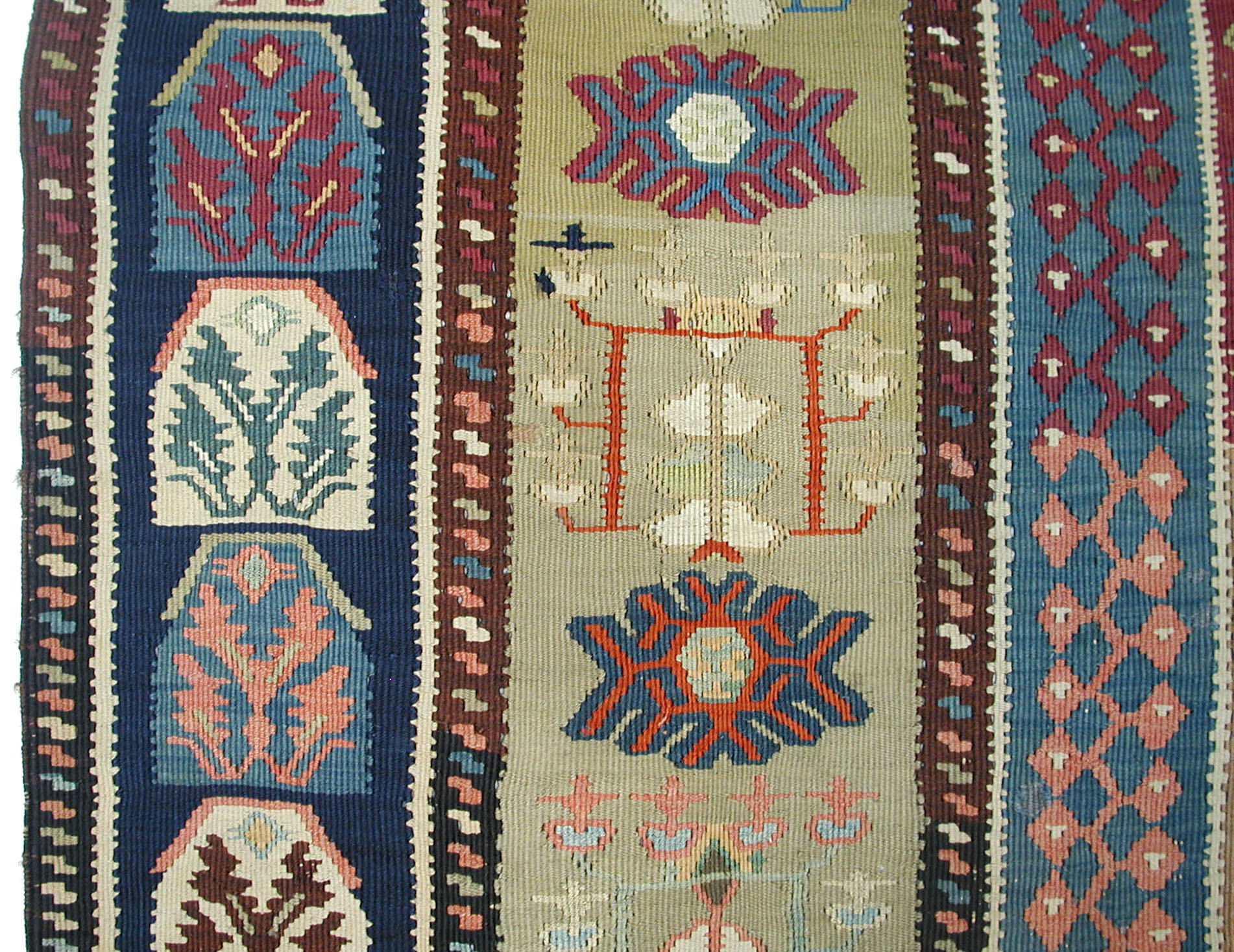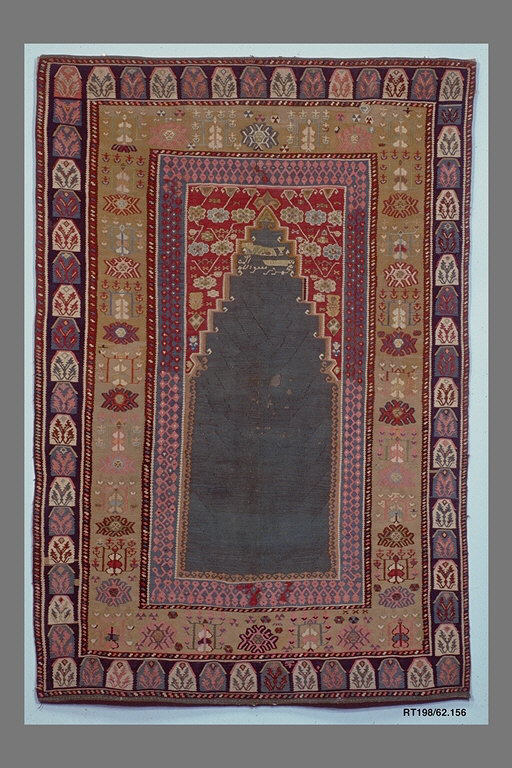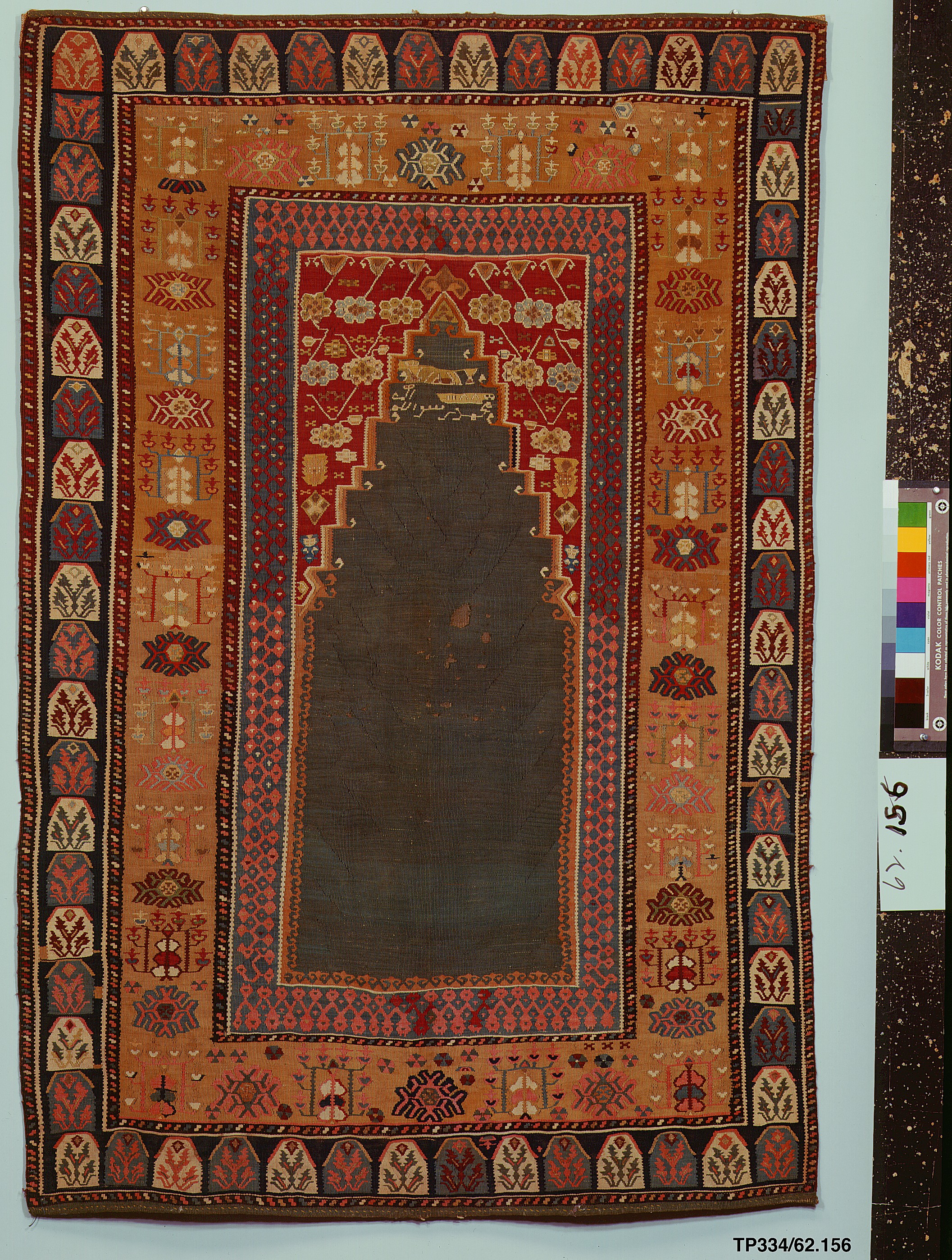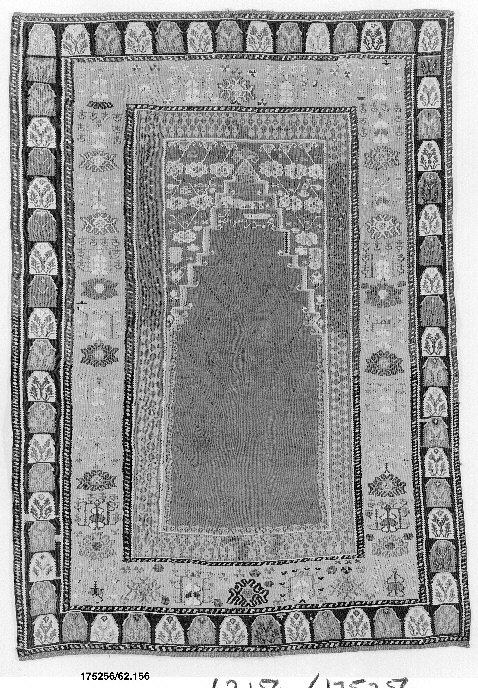Carpet
Not on view
This type of prayer rug, with a stepped mihrab niche supported by columns and a lamp or flowers suspended from the center, was created in the town of Gördes. In the late seventeenth century, other weaving centers took up production of this design as well; in Ladik, where the tradition continued through the eighteenth century, they were most often completed in red, blue, yellow, and green, the borders had stemmed tulips, and columns became even more tapered. An inscription on this carpet dates it to 1774.
Due to rights restrictions, this image cannot be enlarged, viewed at full screen, or downloaded.
This artwork is meant to be viewed from right to left. Scroll left to view more.


